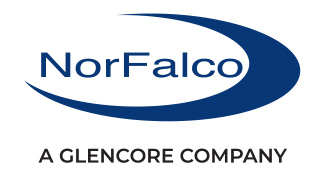Production process
NorFalco's sulfuric acid is produced at three major plants owned by parent company Glencore and the Noranda Income Fund. At these facilities, sulfur dioxide is captured during the metal smelting process to reduce emissions that contribute to acid rain. The sulfur dioxide is then used as feedstock to produce sulfuric acid.
The criteria of purity and accuracy of grade are the primary goals of sulfuric acid production. The contact process is almost universally used to convert sulfur dioxide to sulfuric acid. In this process, sulfur dioxide is oxidized by atmospheric air at high temperatures and in the presence of a vanadium pentoxide catalyst. Here's how it works:
- The process begins with cleaning of the gas. The sulfur dioxide from smelting and roasting operations passes through a series of gas cleaning steps that cool and remove almost all metallurgical dusts. The gas is then drawn through electrostatic precipitators where acid mist and any remaining dust particles are removed.
- The wet gas is dried in a tower by direct contact with 93% sulfuric acid.
- A blower then forces the gas through a series of heat exchangers and converter beds, where, in the presence of vanadium pentoxide, the sulfur dioxide is oxidized to sulfur trioxide. The purpose of the heat exchangers is to utilize the heat of reaction in the converter beds to heat the incoming cool gas to the reaction temperature.
- The sulfur trioxide gas then passes through an absorption tower where it combines with the water in 98% sulfuric acid to make additional sulfuric acid.
Depending on the required product strength, acid from the absorption or drying towers can be stripped of sulfur dioxide, cooled, and pumped to storage. Some acid is exchanged between the absorption and drying circuits to maintain acid strength.
